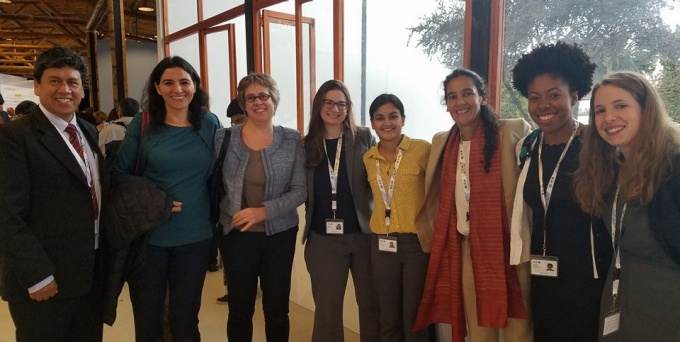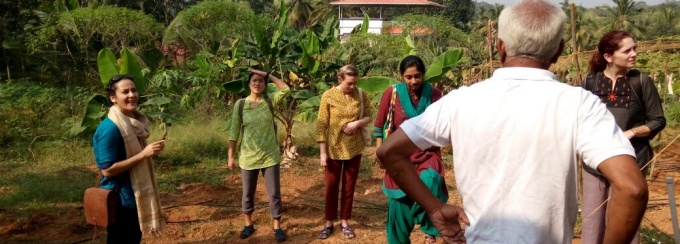Cultivating Food Equity

The University at Buffalo team at Habitat II in Quito, Ecuador
Despite producing 70% of the world’s food, small-scale farmers remain undernourished, as do their neighbors throughout the Global South. Improving food security cannot be done by increasing agricultural production alone; a systems approach is needed to advance access to nutritious, culturally meaningful food. To cultivate food equity, we work with both local stakeholders, such as farm operators, and international influencers, like the UNFAO, studying, developing, and implementing cross-sector policies-in-action.
What is Food Equity?
By Samina Raja
Food equity is the expansive concept that all people have the ability and opportunity to grow and to consume healthful, affordable, and culturally significant foods. In an equitable food system, all community members are able to grow, procure, barter, trade, sell, dispose and understand the sources of food in a manner that prioritizes culture, equitable access to land, fair and equitable prices and wages, human health, and ecological sustainability. Food equity requires that food systems be democratically controlled and community stakeholders determine the policies that influence their food system.
What is a Community Food System?
A community food system is the soil-to-soil system that enables the production, processing, distribution, acquisition, and consumption of food, and management of food waste. A CFS depends on natural resources, technologies, cultural norms, governance structures, policies and laws that shape and influence how food moves from farm to plate. An equitable CFS enhances the environmental, economic, social, and health equity of a place and its inhabitants. In the Global South, where hunger and malnutrition remain a pressing problem, community food systems are rapidly changing, creating both challenges and opportunities. Because of its complexity and breadth, community food systems are ripe for transdisciplinary scrutiny and innovation.
In cities across the United States and in countries around the world, communities lack the ability and opportunity to access healthful, affordable, and culturally significant foods. In particular, food inequity leads to broken food systems that heighten undernourishment and hunger in low- and middle-income countries.

Our Working Solutions

Dr. Samina Raja and her team in Kerala, India
In the News
Policy Briefs
Articles and Reflections
Our Team
Hertel Elmwood Internal Medicine Center 900 Hertel Ave. Buffalo, NY 14216
Phone: 716-871-1571
Email: rod2@
Associate Professor and Director of Graduate Studies
Department of Community Health and Health Behavior

Sylvia Kelly
Graduate Student; Former Graduate Assistant
Urban and Regional Planning and Public Health and Community for Global Health Equity
Email: sylviake@

Carrie Sasche
Former Graduate Assistant
Urban and Regional Planning and Community for Global Health
Email: carriesa@

Erin Sweeney
UB Alumna; Former Graduate Assistant
M. Urban and Regional Planning and Community for Global Health Equity
Email: esweeney@
Subashni Raj, PhD
UB Alumna
Urban and Regional Planning
Our work is done in collaboration with many talented community partners. We list these partners on the affiliated project pages.



















